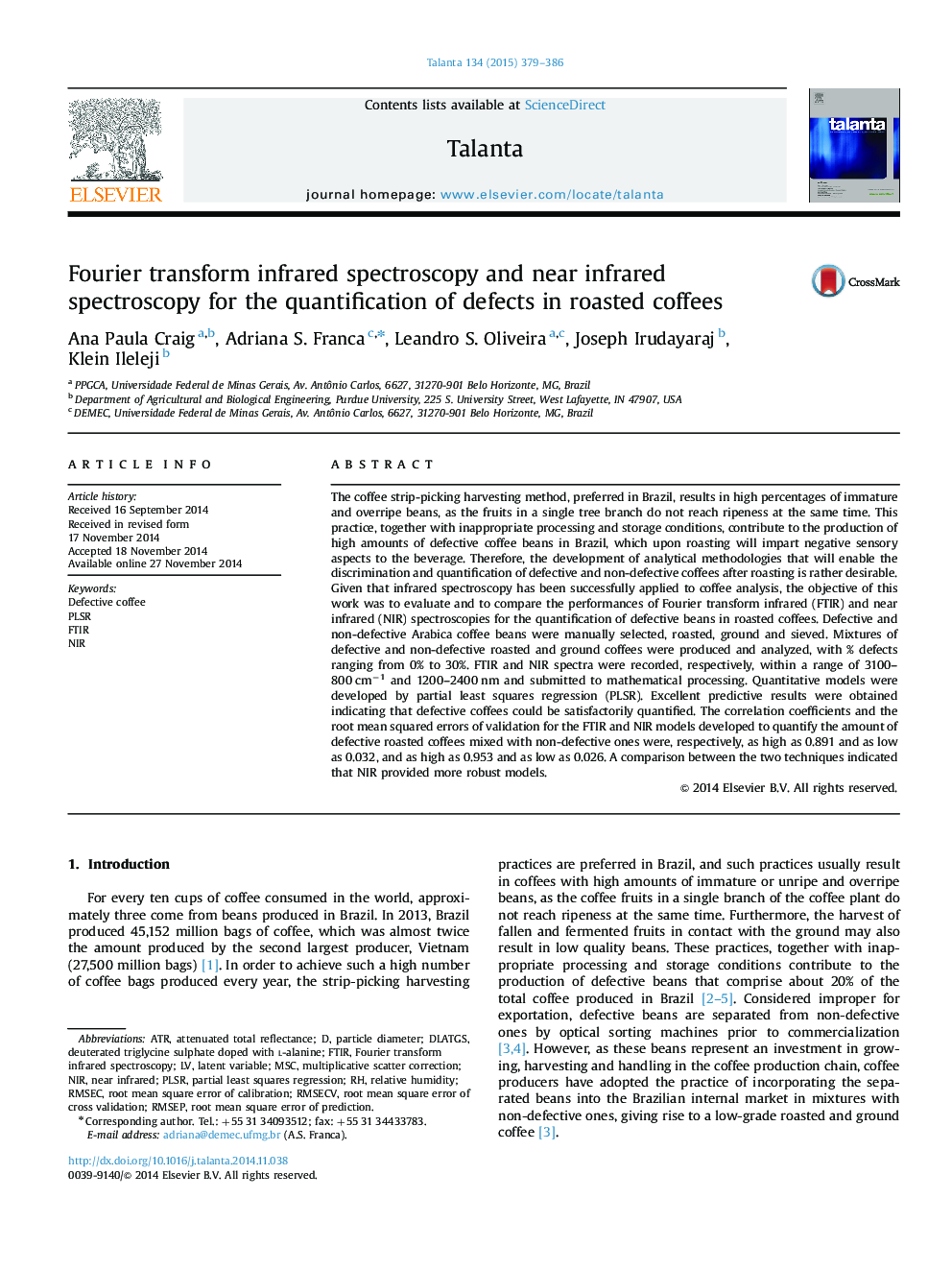| کد مقاله | کد نشریه | سال انتشار | مقاله انگلیسی | نسخه تمام متن |
|---|---|---|---|---|
| 1244094 | 1495801 | 2015 | 8 صفحه PDF | دانلود رایگان |
• Quantitative evaluation of defective coffees mixed with non-defective ones after roasting.
• Comparative evaluation of mid (FTIR) and near (NIR) infrared measurements.
• Both techniques provided models with satisfactory predictions.
• NIR provided models that were slightly more robust.
The coffee strip-picking harvesting method, preferred in Brazil, results in high percentages of immature and overripe beans, as the fruits in a single tree branch do not reach ripeness at the same time. This practice, together with inappropriate processing and storage conditions, contribute to the production of high amounts of defective coffee beans in Brazil, which upon roasting will impart negative sensory aspects to the beverage. Therefore, the development of analytical methodologies that will enable the discrimination and quantification of defective and non-defective coffees after roasting is rather desirable. Given that infrared spectroscopy has been successfully applied to coffee analysis, the objective of this work was to evaluate and to compare the performances of Fourier transform infrared (FTIR) and near infrared (NIR) spectroscopies for the quantification of defective beans in roasted coffees. Defective and non-defective Arabica coffee beans were manually selected, roasted, ground and sieved. Mixtures of defective and non-defective roasted and ground coffees were produced and analyzed, with % defects ranging from 0% to 30%. FTIR and NIR spectra were recorded, respectively, within a range of 3100–800 cm−1 and 1200–2400 nm and submitted to mathematical processing. Quantitative models were developed by partial least squares regression (PLSR). Excellent predictive results were obtained indicating that defective coffees could be satisfactorily quantified. The correlation coefficients and the root mean squared errors of validation for the FTIR and NIR models developed to quantify the amount of defective roasted coffees mixed with non-defective ones were, respectively, as high as 0.891 and as low as 0.032, and as high as 0.953 and as low as 0.026. A comparison between the two techniques indicated that NIR provided more robust models.
Figure optionsDownload as PowerPoint slide
Journal: Talanta - Volume 134, 1 March 2015, Pages 379–386
